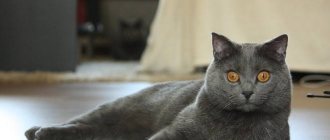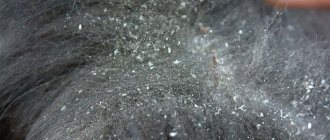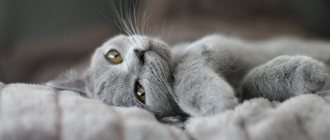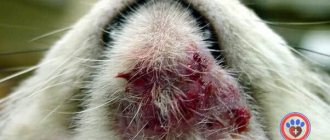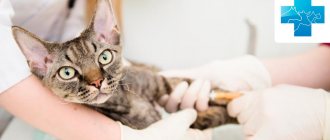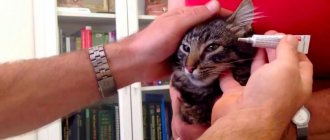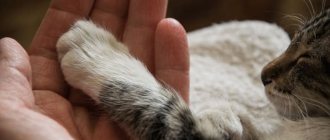It is not uncommon for a cat to have a heart attack. It is caused by poor circulation in the myocardium, which causes necrotic muscle tissue and cardiac dysfunction. Often, pathology manifests itself suddenly, which is why it is important for a pet owner to know what symptoms are inherent in an attack in order to quickly navigate, help the cat and prevent death.
Why does it happen?
The following factors can trigger a heart attack in cats:
- cardiac ischemia;
- congenital defect;
- immunopathological inflammation of blood vessels;
- violation of the frequency, rhythm and sequence of excitation and contraction of the heart;
- severe injuries and bleeding;
- inflammatory heart pathologies;
- lack of taurine in the body;
- advanced age of the animal;
- excessive body weight;
- blood clot separation;
- hereditary predisposition.
In addition, a small kitten and older animals can have an attack when infected with worms. If they penetrate the blood, it is possible that they will weave into balls, which may cause blockage of blood vessels.
Causes of heart failure
- Congenital heart pathologies. In cats they are quite rare, occurring in approximately 2% of all cases.
- Diseases of the heart muscle caused by infectious diseases.
- Cardiomyopathy, which is caused by an inadequate diet in cats. They, as a rule, do not receive enough taurine, which is part of raw fish and meat. During cooking, it is destroyed.
- Heartworms and their larvae are found in mosquitoes. They are microscopic in size. When a mosquito bites, their larvae enter the animal’s bloodstream and settle in the pulmonary artery. Heartworms can grow up to 30 centimeters in size. With their presence in the circulatory system, they interfere with the outflow of blood and cause enormous damage to the arteries. Adults entangle the heart, thereby interfering with its full functioning. Heartworms can be detected using a blood test.
- Age-related hormonal changes. Heart failure is thought to occur in cats over 6 years of age.
- Metabolic disease. Sometimes it is caused by improperly structured nutrition.
Cats should be periodically screened for heartworms to help prevent heart disease. If a taurine deficiency is noticed in a timely manner, it must be introduced into the cat’s food, due to which the vital activity of the heart muscle is restored.
Diagnosis must be carried out by a qualified veterinary cardiologist in order to prescribe the correct treatment. Typically it includes:
- Blood analysis.
- Analysis of urine.
- Ultrasound.
- Chest X-ray.
- ECG.
If a cat has been diagnosed with heart failure, then it should be excluded from planning for breeding, since the hereditary factor plays an important role.
What symptoms indicate a heart attack?
A sign of impending cardiac pathology is the dilation of your pet’s pupils.
The symptoms of the disease are directly related to the period of occurrence of the pathology. The first signs develop in the subacute and acute stages. The following are the symptoms of a heart attack in cats:
- pain syndrome in the left limb, due to which the animal begins to limp;
- dyspnea;
- excitability of the cat;
- dilated pupils;
- loss of appetite;
- heart rhythm disturbances and rapid pulse;
- change in the shade of the mucous membranes to blue;
- lack of coordination.
A heart attack in cats usually has a sudden onset, but sometimes the owner may notice signs of pathology 2-3 days before the attack. Symptoms can be pronounced or sluggish. At the same time, it is important for the owner to pay attention to any changes in the pet’s condition and behavior. If he is initially excited and then rather weakened, this should alert the person. In such a situation, veterinarians recommend taking the animal to a medical facility as quickly as possible. It is important not to give him any medications, as this can cause serious complications for the body.
Heart attack in a cat: first aid
Heart failure and cardiac arrest is one of the most dangerous conditions of the body, in which seconds count. If a cat has a heart attack, first aid includes two main actions - chest compressions and artificial respiration. Here's an algorithm on how to do it:
- The cat must be laid on its side, right or left - it doesn’t matter.
- One hand secures the animal behind its back.
- The fingers of the second hand are located above the heart, in the region of the 4th–5th intercostal space. You can try to count this place along the ribs, or you can simply place your fingers deep under the front paw. At the same time, grasp the animal's chest so that the thumb is at the bottom and the rest at the top, or use the index, middle and ring fingers to apply pressure from above. Sometimes, in larger cats, it is possible to apply both hands (one palm on top of the other).
- Next, it is necessary to perform rhythmic pressure at a speed of 100–120 times per minute, so that the chest is compressed by approximately 30% when pressed.
- Apply artificial respiration every 30 compressions. To do this, you need to wrap your fingers around the animal’s muzzle and forcefully inhale air into the cat’s nose.
If the owner of a sick animal orients himself correctly and begins performing cardiopulmonary resuscitation before the veterinary service arrives, there is a chance to prevent the cat’s death from a heart attack. Unfortunately, resuscitation without timely medical assistance does not always lead to the desired result, but can give hope for salvation.
Of course, some diseases (terminal stage of the disease, heart rupture in a cat due to injury, etc.) will not allow the heart to beat again, therefore the possibility and feasibility of resuscitation of the animal, even in a clinic, should be discussed in advance with a veterinarian.
What canned food tastes best for cats?
RESEARCH ATTENTION! You and your cat can take part in it! If you live in Moscow or the Moscow region and are ready to regularly observe how and how much your cat eats, and also remember to write it all down, you will receive FREE SET OF WET FOOD.
Project for 3–4 months. Organizer - Petkorm LLC.
Want to participate? Call!
Useful materials:
- Cutaneous horn General description of the disease Cutaneous horn on the forehead or face (ICD 10 code - L57.0) -...
- Cloudy eye in a cat Common causes of cloudy eyes in a cat The most common causes of cloudy eyes are glaucoma, cataracts or keratitis.…
- Itching and odorless discharge Main causesBefore considering the factors that provoke the appearance of discharge that has a sour odor, it is necessary to immediately note...
- Normal temperature in animals Normal temperature in different types of animals Veterinary services Day hospital for animals Veterinary certificates Vaccination…
Diagnostic measures
An ECG is considered one of the effective ways to detect pathology.
It is impossible to make a diagnosis at home, since the symptoms of a heart attack are similar to other pathologies of the cardiovascular system. For example, circulatory disorders are also inherent in myocarditis and myocardosis. Therefore, it is important to carefully transport the animal to a veterinary clinic, where electrocardiography and ultrasound examination of the heart will be performed. In addition, a blood test for amylase, creatinine and hormones will help confirm the diagnosis.
How is the treatment carried out?
Treatment of heart attacks in cats must be carried out under the close supervision of a physician. At the same time, the physician takes into account the signs of the disease that have arisen, the severity of its course and the presence of possible concomitant pathologies. First of all, the pet is prescribed medications that help relieve pain. For these purposes, a medicine called “Ketonal” is successfully used in veterinary medicine. Then medications are prescribed to prevent the formation of blood clots. Warfarin and Heparin will be effective in this situation.
After an attack, a cat often experiences swelling. To eliminate them, diuretic pharmaceuticals are prescribed. Furosemide is often used. To normalize the functioning of the heart muscle, Propranolol is used. Treatment of the disease cannot be done without sedative medications, which also help relieve the animal’s sense of fear. Mostly Fospasim is prescribed.
Care and nutrition
After returning home, the animal should rest more time and move less.
The success of therapy depends not only on the recommendations of the veterinarian and prescribed medications, but also on the owner who will care for the pet at home. After the heart attack has been suffered, the cat will need to create conditions of complete rest. The animal is sent to a quiet and dark room where it will not be disturbed by other pets or children. It is important to protect the cat from stressful situations. In addition, owners should ensure that the cat's activity is limited.
Veterinarian Andrei Gennadievich Komolov recommends walking the animal on the street, where the environment is calm and familiar. Walks should be short so that the animal does not get tired. In addition, you will definitely need to change the cat's diet. The menu includes foods that are easily digestible. It is forbidden to give cats fatty foods; it is better to avoid using dry food, which is sold in stores. The diet is enriched with fermented milk products.
If the kitten is small, it is acceptable to give it milk. For older animals, low-fat cottage cheese and sour cream are suitable. In addition, it is allowed to feed cats fish, but in limited quantities. Lean types of meat - chicken, beef - will be useful. You can add cereals to your diet, such as rice and buckwheat. You will need to cook them in weak broth or water. It is forbidden to give pets fatty meats, smoked meats, and sweet foods. If the veterinarian allows it, it is permissible to give the animal easily digestible complementary foods.
Preventive actions
A house with toys will help your pet keep its heart healthy.
To prevent myocardial infarction in cats, it is important for owners to provide the animal with moderate physical activity in the fresh air. If you send your pet outside or you can’t go for a walk with him, you can set up a house for your cat with toys on the balcony. Playing with cat objects increases the load on the heart, making the heart muscle stronger and less susceptible to an attack.
An important preventative measure is the hygiene of the animal and keeping its tray clean. There are a variety of parasites in the cat's litter box, so it is important to clean it after each pet's bowel movement. In addition, the owner needs to diversify the animal’s diet and include foods containing sufficient amounts of vitamins and minerals.
Veterinarians advise giving cats boiled potatoes, legumes, fish and dairy products. The animal can also obtain useful substances from vitamin-mineral complexes, which are given in the spring and autumn. You can buy them in pharmacy chains. Owners should also regularly visit a veterinarian with their cat, which will allow them to identify any pathologies of the cardiovascular system at the initial stages of development, carry out their timely treatment and prevent the development of serious complications that can even lead to death.
Prevention available to everyone
It is very difficult to prevent the occurrence of cardiac necrosis in a pet. In addition, veterinarians are rarely able to identify it in time. However, the owner is able to take preventive measures that will help his mustachioed friend remain healthy and active for a long time.
The main component of a strong immune system is good nutrition. An excess of fatty meat will lead to the formation of cholesterol plaques inside the blood vessels. If the drinking regime is disturbed, there is a high risk of blood clots. This occurs due to poor blood clotting.
Taking human medications by a pet without the supervision of a specialist causes blockage of blood vessels and irreversible changes in the body that cannot be corrected. In case of illness, it is necessary to strictly follow the doctor's instructions. He can determine the lack of nutrients in the body by appearance or give recommendations after conducting a comprehensive study.
Recently, there has been a clear opinion among veterinarians and scientists that the main cause of heart disease is a deficiency of an amino acid called taurine. Adding this beneficial component to food leads to a significant reduction in the risk of heart disease in pets.
Creating comfortable living conditions also has a good effect on the pet’s life expectancy. If he lives in a loving family, where he is caressed and cared for, then the cat will receive a minimum of heart-damaging stress. You need to take care of your pet's physical activity. They should be age appropriate and not excessive. You should play with him more often, allow him to walk in the fresh air and protect him from hypothermia.
The article is for informational purposes only. Contact your veterinarian!
